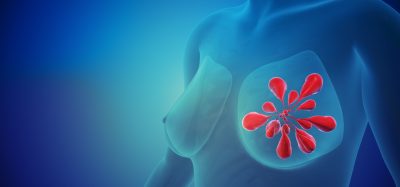New label-free microscopy method enables imaging inside living cells
Posted: 21 April 2020 | Victoria Rees (Drug Target Review) | No comments yet
By combining quantitative phase microscopy and molecular vibrational imaging, researchers have created a new label-free microscopy technique.


A new microscopy technique has been developed which allows researchers to observe the insides of living cells in their natural state and with greater detail than ever before, say the scientists. According to the researchers, this advance should help reveal the complex biological interactions of medical mysteries, like how stem cells develop or how to deliver drugs more effectively.
“Our system is based on a simple concept, which is one of its advantages,” said Associate Professor Takuro Ideguchi from the University of Tokyo Research Institute for Photon Science and Technology, Japan.
The new method also has the advantages of not needing to kill the cells, damage them with intense light or artificially attach fluorescent tags to specific molecules, making it label-free. The technique combines two pre-existing microscopy tools and uses them simultaneously.
“We gather the black-and-white outline of the cell and we virtually colour in the details about where different types of molecules are located,” said Ideguchi.
Quantitative phase microscopy gathers information about the black-and-white outline of the cell using pulses of light and measuring the shift in the light waves after they pass through a sample. This information is used to reconstruct a three-dimensional (3D) image of the major structures inside the cell.
Molecular vibrational imaging provides the virtual colour using pulses of mid-infrared light to add energy to specific types of molecules. That extra energy causes the molecules to vibrate, which heats up their local surroundings. Researchers can choose to raise the temperature of specific types of chemical bonds by using different wavelengths of mid-infrared light.
Also, researchers can take a quantitative phase microscopy image of the cell with the mid-infrared light turned off and an image with it turned on. The difference between those two images then reveals both the outline of major structures inside the cell and the exact locations of the type of molecule that was targeted by the infrared light.
The scientists refer to their new combined imaging method as biochemical quantitative phase imaging with mid-infrared photothermal effect.
“We were impressed when we first observed the molecular vibrational signature characteristic of proteins and we were further excited when this protein-specific signal appeared in the same location as the nucleolus, an intracellular structure where high amounts of proteins would be expected,” said Ideguchi.
The team hopes their technique might allow researchers to determine the distribution of fundamental types of molecules inside single cells. The quantitative phase microscopy outline of major structures could be virtually coloured in using different wavelengths of light to specifically target proteins, lipids (fats) or nucleic acids (DNA, RNA).
Currently, capturing one complete image can take 50 seconds or longer. The researchers are confident that they can speed up the process with simple improvements to their tools, including a higher-powered light source and a more sensitive camera.
The results of the team were published in Optica.
Related topics
Disease Research, Drug Targets, Imaging, Label-Free, Microscopy
Related organisations
University of Tokyo Research Institute for Photon Science and Technology
Related people
Associate Professor Takuro Ideguchi








